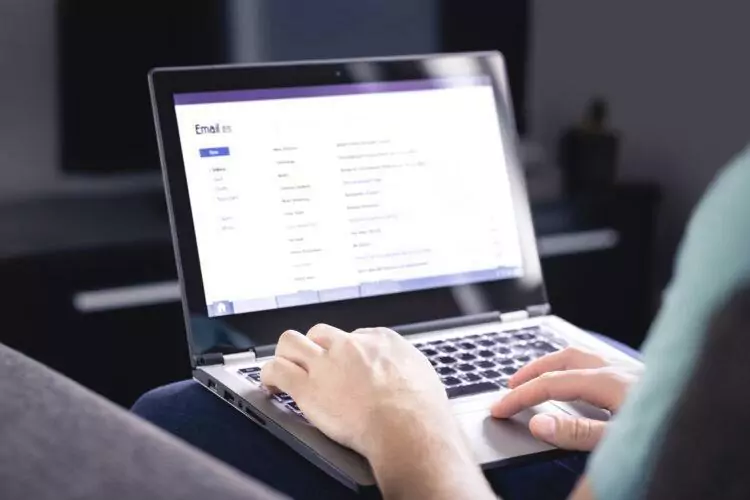LinkedIn is particularly useless as a resource for filling positions or getting hired.
Issues like bots, spam, and content curation make it a poor hiring tool.
On the other hand, LinkedIn is a useful tool for presenting a portfolio, building a professional network, and observing trends.
Let’s get right into it!
- LinkedIn Not Showing Salaries: Why?
- LinkedIn Profile Out of Network: How to Access?
- Uncovering the Mystery: does linkedin show who viewed your profile?
- Interviewers on LinkedIn: When to Add?
- Commenting for Better Reach on LinkedIn: What CFBR Means


Is Linkedin Worth It?
#1 Usability
At least, they don’t really use it. Sure, you’ll see statistics that claim that 87% of recruiters are on LinkedIn.
But, having a profile and really using the platform are two different things. And, a lot of recruiters and job positions and companies aren’t really that active on LinkedIn.
It’s one of many resources, and it’s not always the most important. On top of that, you’ll see a lot of disparity among LinkedIn users based on geography.
Some countries use it more than others. Even within the same country, some cities might have a lot of LinkedIn activity while other locations don’t.
How many small-community law firms do you think are really active on LinkedIn?
Those are still professional businesses and job positions, but LinkedIn just isn’t a powerful resource in those cases.
So, LinkedIn might not be completely useless, but you’ll find plenty of specific scenarios where it offers you know benefit at all.
#2 Spam

Another issue plaguing LinkedIn is spam.
Ultimately, it’s a social media site like any other.
And that means that like the rest of social media, it has problems with bots and spam.
LinkedIn is definitely not an exception here. Why does this matter?
Bots and spam accounts water down search results and the general reliability of LinkedIn networking.
In fact, a lot of bots are better at building their networks than human users, so bots often float to the top of search results. As a recruiter, if all of your top results aren’t human, then LinkedIn is largely worthless to you.
As someone looking for a job, if bots keep pushing you to the bottom of the list, then LinkedIn probably won’t help you get hired. This is the curse of social media.
So, if you’re going to be on LinkedIn, you’re going to have to deal with the nuisances known as bots and spam, and in some cases, it’s not worth the time it takes to deal with that annoyance.
#3 Curation

On a completely different note, the way that content is curated on LinkedIn dramatically impacts its usefulness. Now, part of this comes up with bots and spam accounts.
Those accounts diminish the value of any research you try to do on LinkedIn, and LinkedIn has to try to find ways to overcome those challenges in order to compete with other professional networking resources.
Curation extends further, though.
You’re going to find that you can find jobs or candidates (depending on which side of this applies to you) a lot faster and more reliably on sites like Indeed and Monster than on LinkedIn.
Curation is the primary reason.
You’re paying for these other services, and with that pay comes much better curation that nets superior results.
Specifically, when it comes to matching employers and job seekers, LinkedIn’s curation methods are inferior.
Try to get a job using only LinkedIn, and you’ll see. While some people do find jobs on LinkedIn, that’s not even the primary purpose of LinkedIn.
So, in this category, you’ll find that the more specialized curation of something like Indeed is more successful.
And, even if you’re not looking for a job or a new recruit, this idea of curation applies to everything.
Other social media sites are better for conversation, networking, connections, or a lot of other things. LinkedIn really isn’t the best in any particular area.
#4 Dishonesty

Social media sites have a reputation for bringing out dishonesty in some situations, and LinkedIn suffers from this too.
In a manner of speaking, LinkedIn is all about bragging.
It’s designed to be a permanent resume, but it can be even worse since it isn’t specialized for a specific job listing.
Because of this, the quality of information on LinkedIn profiles is not consistent, and you can’t really trust it.
There’s no real mechanism that prevents people from lying on LinkedIn.
You don’t have to certify against charges of perjury that your LinkedIn profile is accurate.
It’s not a formal job application or anything like that. There’s another way to look at this.
For the most part, people promote LinkedIn profiles specifically because they aren’t where they want to be in terms of their careers.
Sure, there will be exceptions to this, but you can almost think of it as Tinder for professionals.
You don’t obsessively update your LinkedIn profile when you have a great job or career that you love.
Ultimately, this means that the people you are likely to find on LinkedIn are less likely to be the best possible candidates.
#5 Focus

The final problem with LinkedIn is really a two-edged sword. You’re allowed to use the site however you want (within the community guidelines).
For some people, this is great. They can use LinkedIn freely, and that helps them get the most possible out of the platform.
In a lot of other cases, the content drifts away from professional focus.
You’ll see LinkedIn users who are focused on memes, water cooler talk, or other unprofessional content. While that’s fine in a general sense, it devalues LinkedIn in terms of professional networking.
Memes don’t help you find a job or find a good candidate.
They don’t grow a business, and they don’t build your career. This is a specific example, but it highlights the real point.
If you spend time on LinkedIn, you’ll see that a lot of content and activity drift far away from any genuine professional networking.
When Is LinkedIn Not Useless? (5 Things)

We spent a good minute picking on LinkedIn, but the site currently has 830 million members.
That’s not a small number, and it suggests that LinkedIn is probably valuable to someone at some point, right?
The truth is that LinkedIn does have its uses. Those uses aren’t always related to finding jobs, but that’s ok.
There are other ways a professional networking site can help you out, so I’m going to take you through some of the most valuable among those now.
#1 Self-Publishing

Self-publishing is easily one of the most valuable aspects of LinkedIn.
Any user can publish whatever content they want on their profile (provided it doesn’t violate the guidelines).
This allows a couple of things, and one of those is the presentation of a personal portfolio. If you do things that involve professional writing, you can publish your own articles on LinkedIn.
This lets you show off your work, and it helps a lot with acquiring clients or applying for writing positions.
You can do the same with photos, videos, coding, and anything else that you can reasonably publish on a site like LinkedIn.
The freedom of publishing gives you the opportunity to show your own unique work in its original form.
Portfolio development is invaluable in a large number of professional industries, and this is where LinkedIn really is at its best.
#2 Company Groups

This might not be the very most valuable aspect of LinkedIn, but it is an area where the platform can shine.
You can create company groups on LinkedIn, and they can serve a number of purposes.
At the most generic, a company LinkedIn group gives employees a place to communicate and socialize.
They can use the platform to set up company events, social outreach, and anything of the like.
It’s like having a Facebook group (or a group on any other social media), but it’s specifically run under LinkedIn.
What’s often more valuable is that professional group memberships help professionals show off some of the things they do.
So, if you’re a programmer who is on the formal LinkedIn group for Google AI developers, then those are big bragging rights, and they’re verified on a public platform.
This can apply across industries and professions. So, being in a company LinkedIn group is just a good way to show off what you do and what you have accomplished as a professional in your field.
#3 Direct LinkedIn Recruiting

You might remember.
Earlier, I cited a statistic that says 87% of recruiters are on LinkedIn.
Assuming that statistic is anywhere near accurate, then LinkedIn is a valuable tool for connecting with recruiters, and this is important in a few ways. First, recruiters can just plain find you on LinkedIn.
Even if you don’t spend a lot of time on the platform, simply providing a profile that recruiters can look up is worth something.
You might be drowned by bots, but there’s a non-zero chance that a recruiter will actually see your profile on LinkedIn and like it.
With that in mind, it’s not unreasonable to go ahead and make a profile and even update it from time to time.
Beyond that, it’s actually possible for you to get in touch with recruiters via LinkedIn.
You might not be able to spam your way into meaningful communication, but if you have organic connections on the platform, it’s not unreasonable to reach out if you’re interested in pursuing a particular job posting.
If all of the information is there, then LinkedIn is working for you, and that’s a good thing.
Also, as a business, you can post jobs on LinkedIn. That gives you visibility among a very large pool of professionals, and some of them might even be interested, qualified candidates.
Even if LinkedIn isn’t perfect in any of these respects, it can add value, despite the bots and other problems.
#4 SEO

If you aren’t familiar with search engine optimization (SEO), it’s the practice of making your website do better on search results.
Skipping a whole lot of technical explanations, if you have a website that you would like to promote, LinkedIn helps.
For starters, LinkedIn allows you to link your website and show it to anyone who views your profile.
That alone can generate visits to your site, which is the whole goal.
More than that, LinkedIn can provide valuable links that point to your website.
The simple version goes like this. Search engines rank websites by what content is on the site and how easy it is to find the site.
So, when you have links from very popular websites that point back to your own site, that’s good for your search rankings.
LinkedIn is a massive site with millions of regular visitors. It also allows you to put links right there on your profile. That is a link on a LinkedIn server that points directly to your website. That’s a good thing.
Now, you can do this with all social media sites, and if you’re investing in SEO, that’s exactly what you should do. The point is that LinkedIn has real value here.
#5 Browsing the Job Market

The last high point I’m going to discuss for LinkedIn is market research.
LinkedIn has a lot of users, and with that, you have an opportunity to browse good data to figure things out related to a bunch of markets.
Even though not all job listings are going to show up on LinkedIn, there are enough that you can start to get a picture of job markets and trends.
The site can give you a general feel for the ebb and flow of an individual market or jobs in general.
If you see a ton of job listings for professional development coordinators on LinkedIn, chances are that this particular job is in hot demand at the moment.
You can apply this logic to any field, job, or industry.
Doing so, you can use LinkedIn to help follow job market trends, assuming that is something that holds any interest or value for you.

